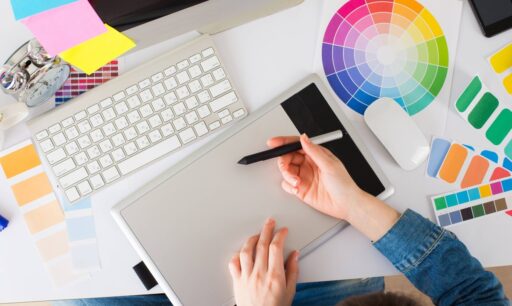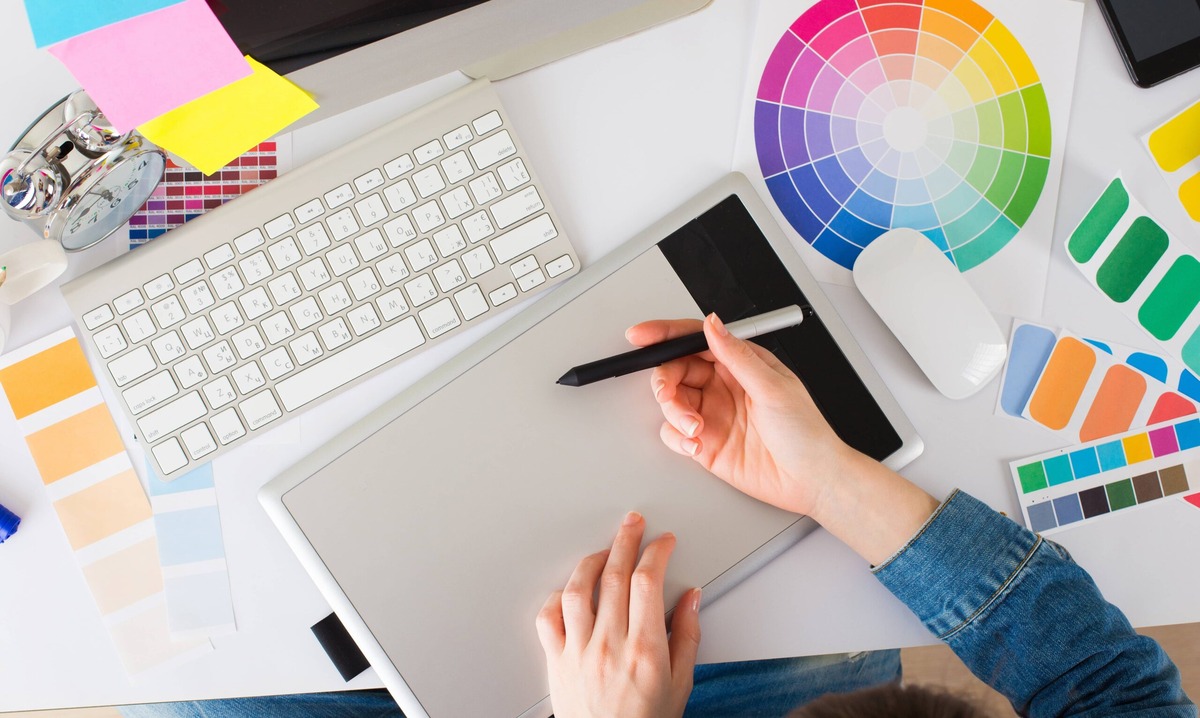Introduction: Graphic design is a dynamic field that continuously evolves with technological advancements, cultural influences, and shifting consumer preferences. Understanding and adapting to emerging trends is crucial for graphic designers to stay relevant and innovative in their work. In this article, we’ll delve into some of the latest trends shaping the world of graphic design, encompassing visual styles, techniques, and technologies.
- Abstract and Organic Shapes: In recent years, there has been a noticeable shift towards the use of abstract and organic shapes in graphic design. Designers are moving away from rigid geometric forms towards more fluid and dynamic shapes inspired by nature. This trend adds a sense of playfulness and creativity to designs, allowing for more expressive and visually engaging compositions.
- 3D Design and Rendering: Advancements in 3D modeling software and rendering technologies have opened up new possibilities for graphic designers. Three-dimensional elements are increasingly being incorporated into designs, adding depth and realism to visual compositions. From product mockups to immersive environments, 3D design offers a versatile toolkit for creating captivating visuals across various mediums.
- Nostalgic and Retro Aesthetics: Nostalgia continues to influence graphic design trends, with designers drawing inspiration from past eras and vintage aesthetics. Retro color palettes, typography styles, and visual motifs evoke feelings of nostalgia and familiarity, resonating with audiences across generations. By blending elements of the past with modern design sensibilities, designers can create visually compelling and nostalgic experiences.
- Abstract Minimalism: In recent years, there’s been a resurgence of minimalism in graphic design, but with a twist. Designers are embracing abstract minimalism, incorporating geometric shapes, bold lines, and negative space to create visually striking compositions. This trend adds a modern, avant-garde aesthetic to designs while maintaining the simplicity and elegance of minimalism.
- Sustainability-Inspired Design: With increasing awareness of environmental issues, sustainability has become a significant consideration in graphic design. Designers are integrating eco-friendly materials, recyclable packaging, and sustainable printing practices into their work. Beyond just aesthetics, sustainability-inspired design communicates a brand’s commitment to environmental responsibility, resonating with eco-conscious consumers.
- Dynamic Typography: Typography has always been a cornerstone of graphic design, but now designers are pushing the boundaries with dynamic typography. From kinetic typography in motion graphics to interactive typefaces on websites, typography is becoming more than just static text—it’s a dynamic element that engages and captivates audiences. This trend adds depth and personality to designs, enhancing the overall visual experience.
- Mixed Media Collages: In a digital world, there’s a growing appreciation for the tactile and handmade. Mixed media collages combine traditional art techniques with digital tools, resulting in visually rich and textured compositions. Designers are layering photographs, illustrations, and textures to create dynamic collages that tell compelling stories and evoke emotions. This trend celebrates the eclectic and eclectic, embracing imperfection and spontaneity.
- Augmented Reality Integration: Augmented reality (AR) is revolutionizing graphic design by blurring the lines between the physical and digital worlds. Designers are incorporating AR elements into print materials, packaging, and marketing campaigns to create immersive experiences for consumers. Whether it’s interactive product demonstrations or virtual try-on experiences, AR integration adds a new dimension to graphic design, transforming static visuals into interactive, engaging content.
- Algorithmic Design: Advancements in artificial intelligence and machine learning are opening up new possibilities for graphic design. Designers are leveraging algorithms to generate dynamic visuals, create personalized experiences, and automate repetitive tasks. From generative art to responsive layouts, algorithmic design empowers designers to explore new creative territories and adapt to the evolving demands of the digital landscape.
- Responsive and Adaptive Design: With the proliferation of mobile devices and varying screen sizes, responsive and adaptive design has become essential for graphic designers. Designing with flexibility in mind allows content to adapt seamlessly to different devices and screen resolutions, ensuring optimal user experiences across platforms. From fluid layouts to scalable typography, responsive design principles empower designers to create versatile and accessible designs for today’s digital landscape.
- Augmented Reality (AR) Integration: Augmented reality (AR) is revolutionizing the way we interact with digital content, and graphic designers are harnessing its potential to create immersive experiences. By integrating AR elements into print materials, packaging, and digital interfaces, designers can blur the boundaries between the physical and digital worlds. AR technology offers exciting opportunities for storytelling, interactivity, and brand engagement, pushing the boundaries of traditional graphic design.
- Data Visualization and Infographics: In an age of information overload, effective data visualization is essential for communicating complex concepts and statistics. Graphic designers are utilizing infographics and data-driven visualizations to distill large datasets into digestible and visually appealing graphics. From interactive charts to animated infographics, designers are transforming raw data into compelling narratives that inform and engage audiences.
Conclusion: As graphic design continues to evolve, embracing emerging trends is essential for staying ahead of the curve and pushing the boundaries of creativity. By exploring new visual styles, techniques, and technologies, designers can elevate their work and create meaningful experiences that resonate with audiences. Whether it’s experimenting with 3D design, embracing nostalgic aesthetics, or leveraging AR technology, embracing innovation is key to shaping the future of graphic design.






